Author: Keith Watson
Why the SwimErg with the PM3 Power Meter and TrainerDay is the only dryland tool to prepare you for the unique demand of triathlon and open-water swimming.
Benefits of using a Vasa SwimErg for consistent swim training:
In this article, you will learn why the Vasa SwimErg is the best, most affordable tool for open water swimming.
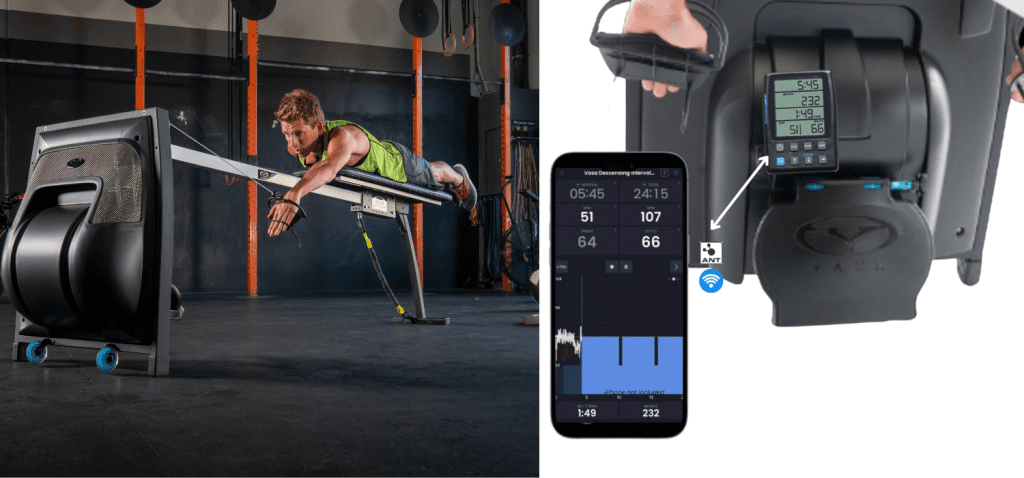
Why the Swim Erg is the Best Tool for Open Water Swimming
The SwimErg is the best tool for developing the technique, strength, and power endurance needed for a successful open-water swim.
Maintaining consistent swim training in open water (or a current pool) is a complex matter for most people. It’s challenging to replicate the training demands of open-water swimming while obtaining quantifiable data to track your progress, as can be done with the Vasa SwimErg.
Depending on the event or workout distance, expect to take 1900 to 3800 continuous strokes without breaks. Most age-group triathletes will wear a wetsuit, which places additional demands on the lower back and shoulders. If you want to swim strong and efficiently wearing a wetsuit, developing the strength and power endurance necessary to do so successfully is essential.
It’s true that swimming in a pool can help you improve your technique and develop overall swimming fitness. But, you will need more preparation for the specific demands of open-water swimming. In a pool workout, you must turn after swimming every length of the pool. Those “micro-breaks” turning at the wall disrupt stroke rhythm and provide short rest periods. These breaks are impossible in open water unless you stop and tread water. It’s common to hear triathletes complaining after their race that they did not have the endurance necessary to sustain a strong swim. Many exit the swim, feeling exhausted when they get on the bike, even though they “covered the race distance” when training in the pool.
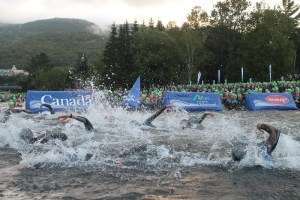
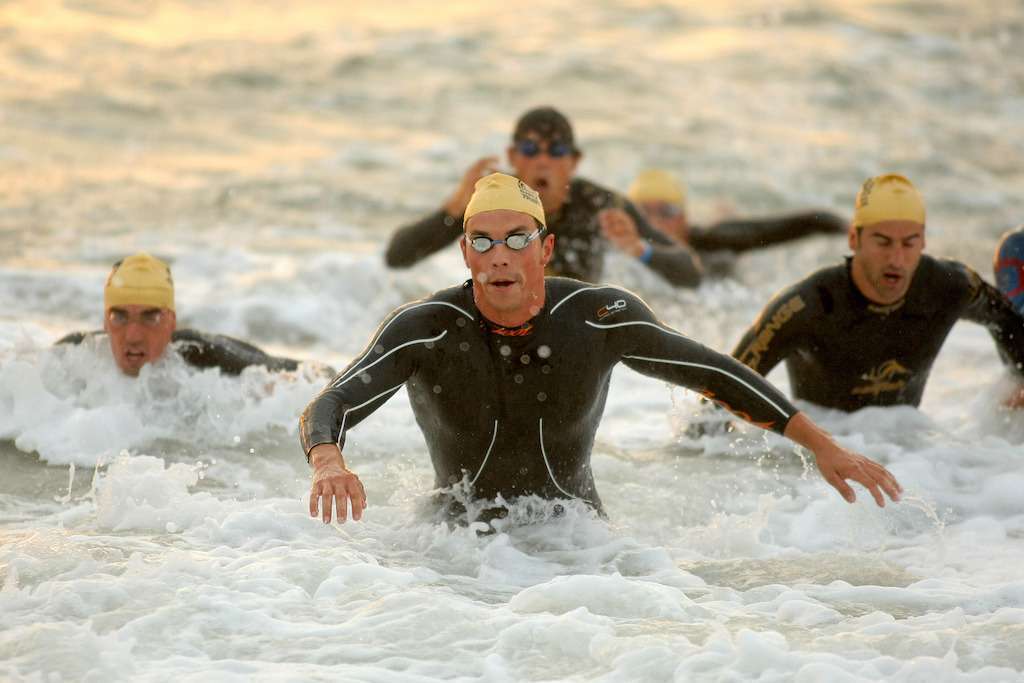
Why should you incorporate dryland swim training?
Why not just swim in the open water? Great question! Consistently swimming in open water wearing a wetsuit is one of the best ways to prepare for an open water swim event. However, in most places lakes are not open year-round, and swimming in the ocean can have accessibility limitations. Setting up a current pool at home is very expensive.
Swimming in lakes, rivers, and the sea also poses safety issues. Depending on the location and time of year, lifeguards will likely not be there to help if you get into trouble. NOTE: If you can access open water, never swim alone, and always use a bright flotation buoy for safety.
Improve your triathlon training with a SwimErg
If open water access is unavailable and you don’t have a current pool at home, fear not. Another great option is the Vasa SwimErg. This indoor swim training tool will allow you to consistently improve technique, strength, and power endurance in a controlled environment with measurable and real-time quantifiable feedback. There are no pool lanes you have to share, turns at the walls, wasted time commuting, or sharks, snakes, and alligators to chase you! The SwimErg has seven resistance levels that simulate the feeling of pulling through the water. It has a precise power meter to measure output, distance, stroke rate, pace per 100M, and more. It allows athletes to replicate the demands of continuous swimming in the open water conveniently.
For triathletes, a bonus is the ability to quickly simulate swim-to-bike transitions. These can’t be done simply at the pool, lake, or ocean without careful logistical planning. As a coach, I have my athletes perform a swim-to-bike brick session every three weeks. This session covers the combined race distance of the swim and the bike. For example, suppose they are preparing for a half-ironman distance triathlon. In that case, I will have them do a 1900-meter swim on the SwimErg. Then, transition to the bike for 2.5 to 3 hours. This ride is either outdoors on the road or indoors using a course from either Rouvy, KinoMap, or FulGaz.
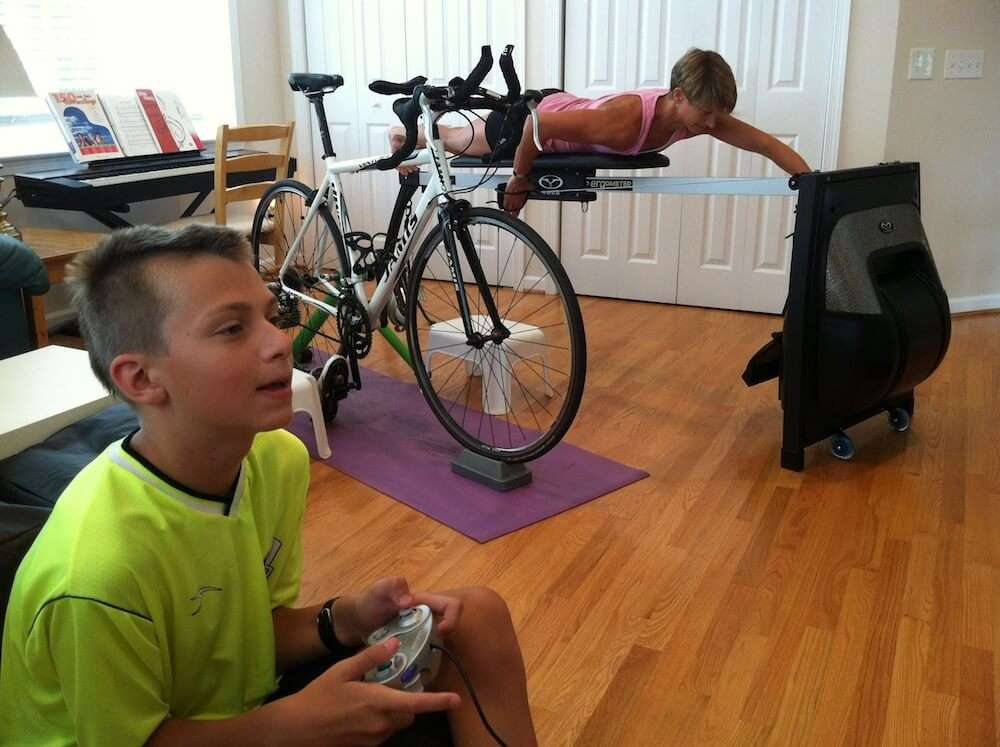
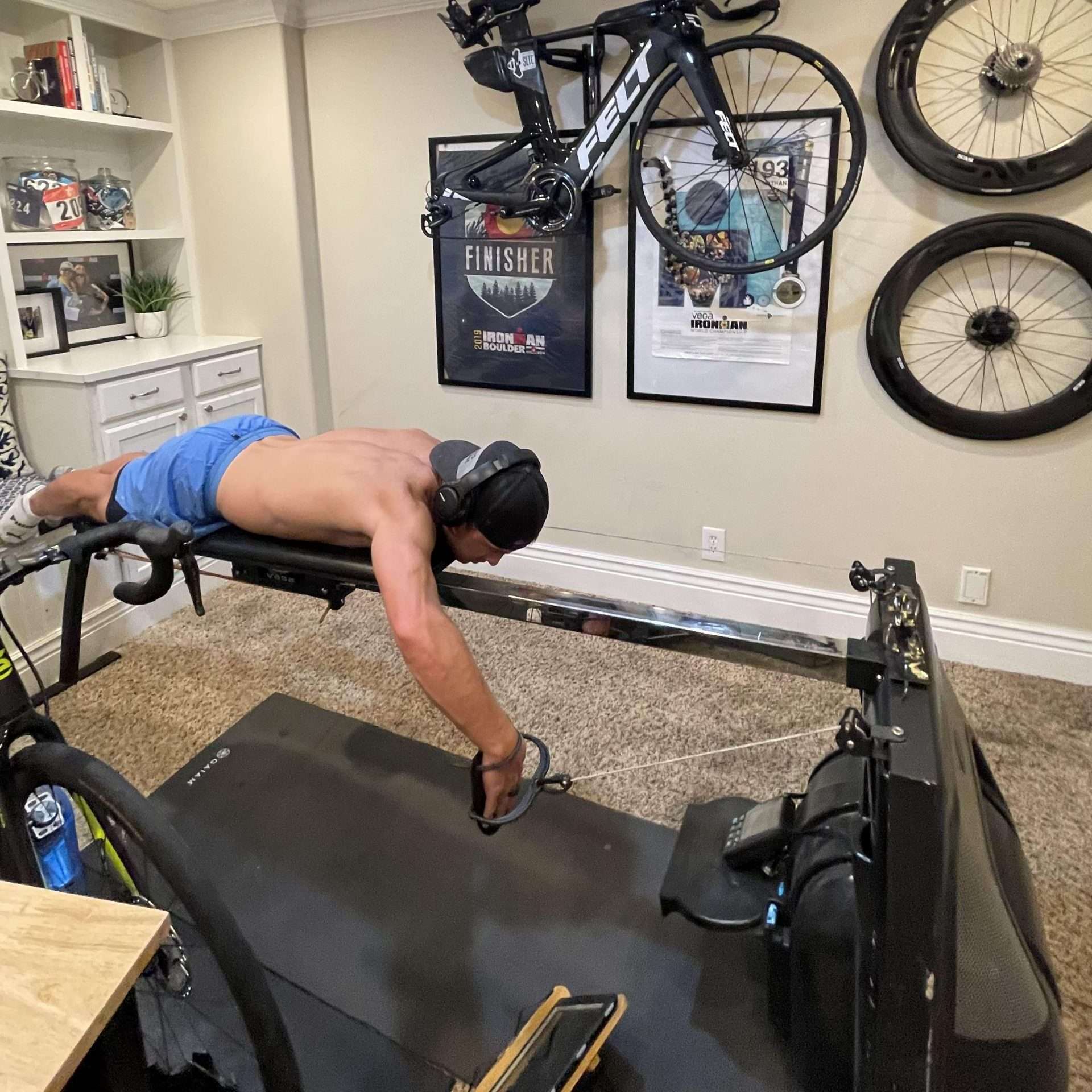
Training Sessions with TrainerDay
For me, here is the best part. You can plan your workouts, perform your training, and track your progress utilizing the PM3 Power Meter paired with the TrainerDay App on your tablet or mobile device.
The two key sessions I like to prescribe are 9×4 minute intervals, descending 1-3 for half-ironman distance athletes, or 9×7 minute intervals, descending 1-3 for athletes training to do ironman races. My go-to brick session is the continuous build swim of either 1900 or 3800 meters, respectively. Building these workouts in TrainerDay is easy, and the graphical interface, power, stroke rate, pace, and distance metrics make it engaging and easy to stay focused.
You can also upload your workout data to third-party apps like Strava, TrainingPeaks, and Intervals.ICU for even more detailed post-workout analysis and comparison to previous sessions.
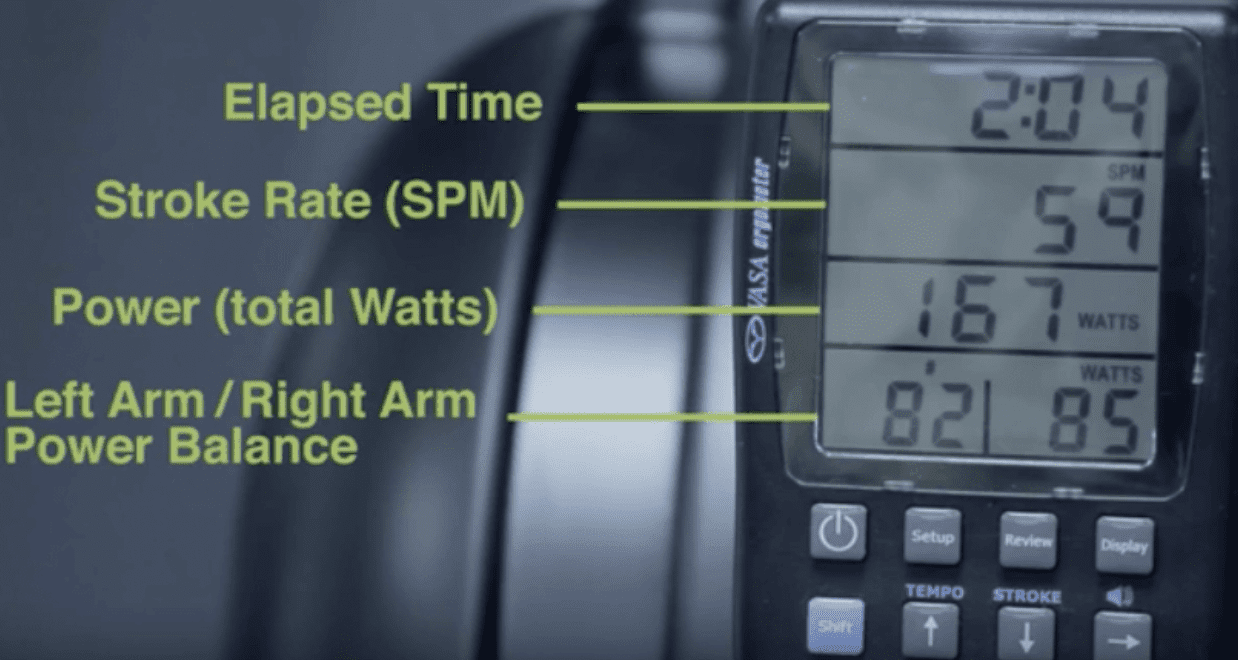
Conclusion
While triathlon is mostly aerobic, it also requires muscular strength for the three sports. You must be strong and efficient on the bike to have a fast run. To cycle well, you must exit the swim having minimal energy expended. A strong swim leads to an efficient bike which leads to a fast run. It’s just that simple. So instead of spending hours at the pool doing drills that will do little to advance your sustained power and technique in open water, save the commuting time and train on the Vasa SwimErg. You’ll be in the comfort of your home, and you’ll get more time back in your day.
Don’t let the swim be the limiter you just have to survive so you can “start your race” on the bike and the run. Make swimming in open water a good experience by gaining strength and confidence with the right training. The best tool for open water swimming is the SwimErg. Swim training on the Vasa SwimErg is convenient, proven effective, and helps athletes complete their goal swims stronger, more efficiently, and feel confident throughout their events.
